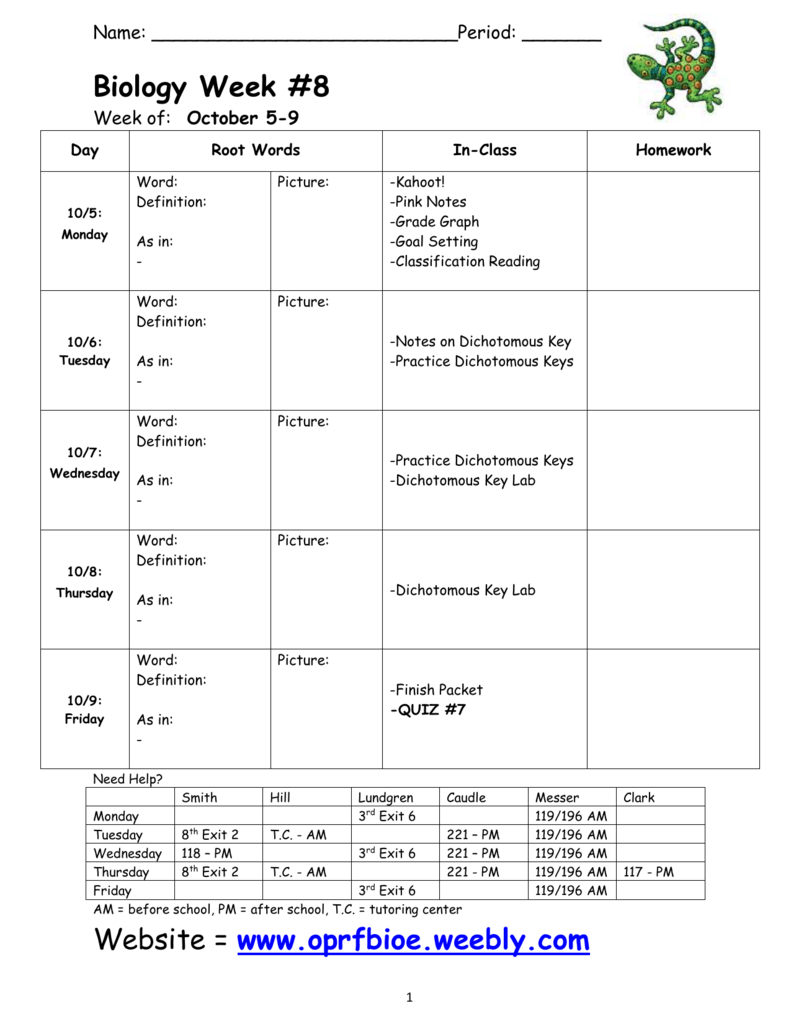Dichotomous Key on Norns
※ Download: Dichotomous key practice
Bean evenly pigmented Go to 4 3b. Materials Dichotomous Key Images of Organisms Procedure 1. Mouth is a small circle................. Go to that number and again decide between the two options.
During this trek, the fish encounter many perils, and not all of them will survive to reproductive maturity. Dichotomous Keying Introduction to Dichotomous Key Maker: The identification of biological organisms can be greatly simplified using tools such as dichotomous keys. As the season moves into late summer and early fall, the juvenile fish leave the shelter of the upper estuary and begin a journey to the open ocean from which their parents came.

Dichotomous Key - It teaches students how living things are grouped together by scientists, ultimately leading to their Genus and species name, making up their scientific name.

September 24, 2016 Question Exercise 1: Dichotomous Key Practice. In this exercise, you will identify organisms by their binomial nomenclature using a dichotomous key. Materials Dichotomous Key Images of Organisms Procedure Start by observing organism i Figure 2. Once you have taken notice of its physical characteristics, use the dichotomous key Figure 3 to identify the organism. Go to that number and again decide between the two options. Eventually you will wind up at a two name scientific name. Once you have identified organism i, record your finding in Table 3. Repeat Steps 1 — 6 for all of the organisms in the dichotomous key Figure 3. Table 3: Dichotomous Key Results Organism Binomial Name i ii iii iv v vi vii viii ix x xi xii xiii Post-Lab Questions 1. What do you notice about the options of each step as they go from number one up? How does your answer from Question 1 relate to the Linnaean classification system? Repeat this for the remaining organisms. After classification, fill in Table 4 with the correct domain and kingdom when applicable for each organism. Table 4: Key Characteristics of Some Organisms Organism Kingdom Defined Nucleus Motile Cell Wall Photosynthesis Unicellular E. Did this series of questions correctly organize each organism? Why or why not? What additional questions would you ask to further categorize the items within the domains and kingdoms Hint: think about other organisms in the kingdom and what makes them different than the examples used here? What questions would you have asked instead of the ones that you answered about when classifying the organisms Pre-Lab QuestionsUse the following classifications to determine which organism is least related out of the three. You are on vacation and see an organism that you do not recognize. Discuss what possible steps you can take to classify it. Exercise 1: Dichotomous Key Practice A dichotomous key is an identification tool that starts with broad defining characteristics and splits into two options until an organism can be identified. In this exercise, you will identify organisms by their binomial nomenclature using a dichotomous key. Materials Dichotomous Key Images of Organisms Procedure 1. Start by observing organism i Figure 2. Once you have taken notice of its physical characteristics, use the dichotomous key Figure 3 to identify the organism. Go to that number and again decide between the two options. Eventually you will wind up at a two name scientific name. Once you have identified organism i, record your finding in Table 3. Repeat Steps 1 — 6 for all of the organisms in the dichotomous key Figure 3. Table 3: Dichotomous Key Results Organism Binomial Name i ii iii iv v vi vii viii ix x xi xii xiii. Select the first organism from Table 4 E. Repeat this for the remaining organisms. After classification, fill in Table 4 with the correct domain and kingdom for each organism if applicable. Table 4: Key Characteristics of Some Organisms Organism.
If a glossary is unavailable, find a good reference work for the field textbook, dichotomous key practice dictionary,…etc. Go to that number and again decide between the two options. Once you have identified organism i, record your finding in Table 3. After classification, fill in Table 4 with the correct domain and kingdom for each organism if applicable. What questions would you have asked instead of the ones that you answered about when classifying the organisms Pre-Lab QuestionsUse the following classifications to determine which organism is least related out of the three. Some examples of websites featuring dichotomous keys are listed below. A dichotomous key maker is an organized set of couplets of mutually exclusive characteristics of biological organisms. It also emphasizes the special adaptations each has to its aquatic habitat and demonstrates how macroinvertebrates can be indicators of the health of the stream. This key is for classifying insects in the correct order by looking at characteristics.



